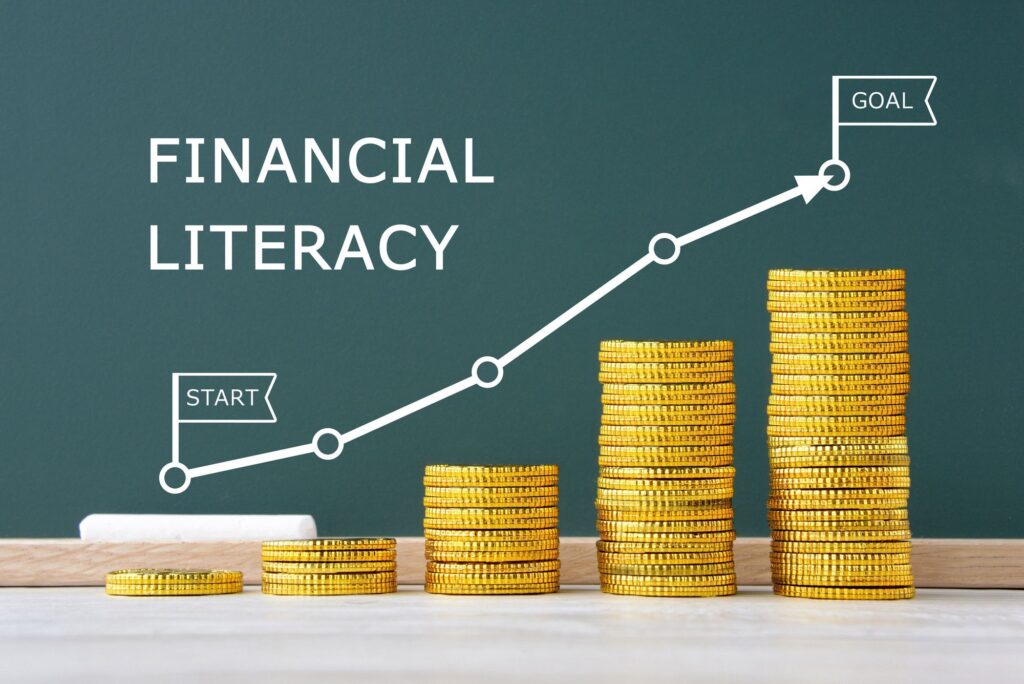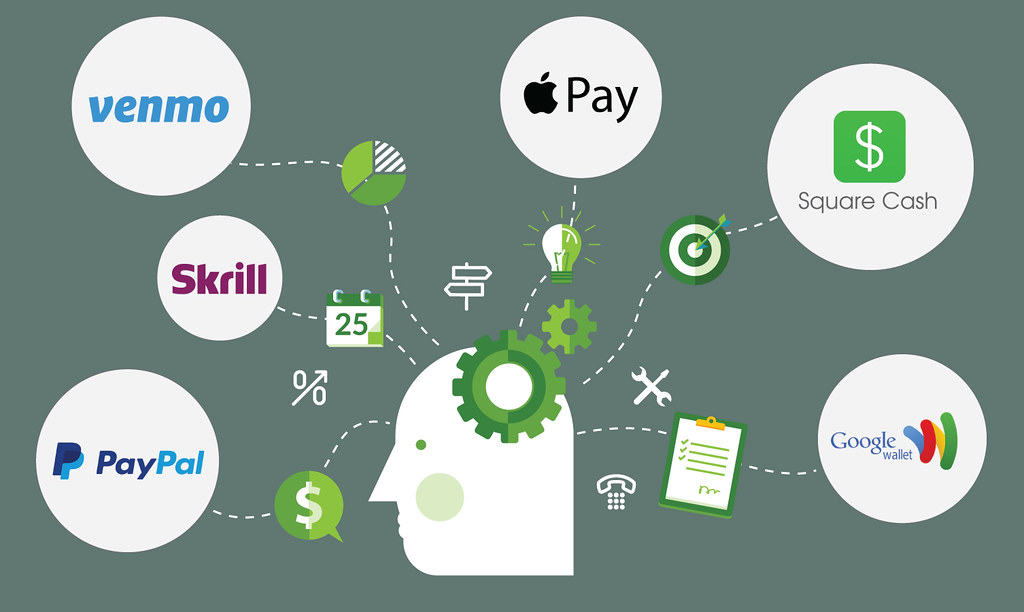The increasing social isolation among older adults has unfortunately made them more vulnerable than ever to financial victimization. This represents a significant and growing threat to their financial security and peace of mind. Financial exploitation of older adults costs at least $36.5 billion annually, according to estimates from the National Council on Aging. These figures represent stolen life savings, shattered trusts, and immense emotional distress for victims and their families.
It’s crucial to understand that elder financial exploitation extends far beyond the common image of anonymous con artists bombarding older adults with robocalls and phishing emails. While those threats exist, a shocking “vast majority” of reported cases involve people the victim knows, including relatives, caregivers, neighbors, and friends. This highlights the insidious nature of this crime, where trust is often weaponized, making it incredibly difficult for victims to identify or report the abuse.
Financial abuse can manifest in various forms, ranging from direct theft of Social Security checks to forging financial documents or misappropriating cash, jewelry, and other valuable assets. Given the complexity and subtlety of these tactics, vigilance and informed awareness are our most powerful tools. This article aims to arm you with the knowledge to spot the telltale signs and circumstances that can indicate elder financial abuse, helping you proactively protect yourself or someone you love from falling victim to these sophisticated schemes.
1. Unexplained Activity in Accounts
A major red flag of potential financial abuse is the sudden appearance of “unexplained activity in an older person’s accounts,” as highlighted by certified financial planner Stephanie Genkin. This refers to transactions that are either out of character or simply unremembered by the account holder. Such activity demands immediate and thorough investigation to ascertain its legitimacy and source.
Key indicators to watch for include large, uncharacteristic withdrawals from bank accounts, which might appear unusual given the individual’s typical spending habits. Similarly, an increasing number of unpaid bills or the sudden accumulation of questionable credit card charges can signal that someone other than the older adult is manipulating their finances. These discrepancies should never be dismissed lightly.
Furthermore, be vigilant for any bank transfers or recurring transactions that the account holder does not recall making or authorizing. While it’s natural for older individuals to forget minor details from time to time, major financial dealings they have no memory of requesting or authorizing should set off significant alarm bells. Their difficulty in explaining such transactions is a strong warning sign.
To proactively guard against this form of fraud, Genkin suggests periodically reviewing an aging loved one’s bank and credit card statements with them. Establishing a transparent system that allows both you and your loved one to monitor financial activity can be immensely beneficial, alongside maintaining open lines of communication about money matters.
Read more about: Hollywood’s Darkest Riddle: 8 Clues Unraveling George Reeves’ Lonely Goodbye in 1959

2. The Emergence of New ‘Friends’ or Helpers
Individuals who live alone are particularly susceptible to financial exploitation, as wrongdoers can more readily hide their misdeeds if no one else is around to observe or intervene. A significant warning sign to watch for is the sudden appearance of new “friends” or “romantic interests” in an older adult’s life. While new social connections can be positive, rapid and intense involvement, especially concerning finances, warrants careful scrutiny.
Fraudsters are adept at building online or even in-person relationships, sometimes spending weeks or months cultivating a bond with seniors. Once this emotional connection is formed, it becomes significantly easier for the older adult to rationalize making payments or providing financial access to this seemingly trusted individual. These new acquaintances often exert pressure on the older adult to make financial decisions or to grant them access to accounts, often under the guise of “helping” or “managing” things.
Be wary if an older adult forms a new relationship and that person quickly becomes deeply involved in their finances or personal affairs. This could involve the new “friend” offering to help manage bills, gaining access to bank accounts, or even moving into the older adult’s home, gaining access to sensitive documents and passwords. It’s vital to investigate the background and intentions of such individuals, especially if their involvement escalates rapidly.
A related warning sign is an increased isolation of the older adult from existing family members or trusted advisors. Fraudsters often work to estrange their victims from their established support networks. This isolation allows the fraudster to maintain greater control over the older adult, making it harder for others to spot the abuse or intervene. Maintaining open communication and regular contact with older adult family members is paramount.
Read more about: Meghan Markle’s Royal Reckoning: Unpacking the Clash Between Disney Dreams and Dutiful Protocols

3. Sudden Shifts in Financial Interests
A subtle yet powerful indicator of potential elder financial exploitation is a noticeable and sudden change in a person’s financial habits or investment interests. This often occurs when fraudsters introduce seemingly lucrative, yet ultimately risky or fraudulent, investment opportunities. The shift in interest might be entirely uncharacteristic of the individual’s long-standing financial approach.
For instance, an older adult who has always preferred conservative investments might suddenly develop a keen interest in trading digital commodities, foreign currencies, or other highly speculative financial products. This new enthusiasm is frequently fueled by the promises of quick, substantial returns, often marketed as “risk-free” opportunities by manipulative individuals who have recently entered their lives.
Another concerning sign is when an older adult begins to consider cashing out retirement savings and moving significant sums of money to a self-directed IRA, especially if the new investment path involves unfamiliar or complex instruments. Similarly, an unusual interest in rare coins or precious metals as a means to “safeguard their retirement savings” can be a red flag. These are common ploys used by fraudsters to gain access to or control over substantial assets.
Older Americans often possess more accumulated wealth than younger people, having had longer to save and invest. This makes them attractive targets for those seeking to exploit financial vulnerabilities. Fraudsters skillfully tap into anxieties about retirement savings, luring victims with seemingly appealing, but ultimately deceptive, propositions for extra income or bigger returns.
Read more about: The Truth About Brad Pitt & Angelina Jolie’s Daughter Zahara

4. Uncharacteristic Secrecy About Finances
When an older adult suddenly becomes highly secretive about their finances, or about a particular investment, especially when they weren’t before, this can be a strong warning sign of manipulation. Fraudsters commonly encourage secrecy from victims. They understand that if the scam is discussed with family or trusted advisors, it’s far more likely to be discovered and stopped. This tactic creates an isolated environment where the scammer can operate unchecked.
This newfound secrecy might manifest as evasiveness when asked about financial matters, a reluctance to share bank statements, or an insistence on handling all financial affairs independently after previously accepting help. The older adult may become defensive or agitated if questions are posed about their new “friend” or an investment opportunity they are pursuing. These behavioral changes are key indicators that something is amiss.
The emotional toll of financial exploitation can lead to feelings of shame and embarrassment, further contributing to a victim’s reluctance to discuss their situation. They might fear losing their independence or admitting they were “taken advantage of.” It’s vital for family and friends to approach these conversations with empathy and understanding, stressing that anyone can be victimized by sophisticated scams, to encourage openness and reporting.

5. Growing Debt and Financial Strain
Visible signs of financial strain or growing debt in an older adult’s life can often signal underlying financial abuse. While these issues can arise from legitimate circumstances, when combined with other red flags, they warrant closer inspection. For instance, an older adult who previously managed their money effectively might suddenly report running out of money at the end of the month, or struggle to cover routine expenses.
A significant increase in credit card balances, especially without a clear explanation for the spending, is another concerning indicator. Fraudsters may pressure victims to open new credit lines or use existing ones to fund their schemes. Additionally, if an older adult expresses regret or worry about recent financial decisions they’ve made, it could be a sign they are being coerced or manipulated into transactions they later question.
Financial difficulties can be masked, however. An older adult might continue to maintain a facade of financial stability while secretly accumulating debt or transferring assets. Open communication about their financial health and offering support in reviewing their budget or bills can help uncover these hidden struggles before they escalate into irreversible losses.
Read more about: Why Are Used Car Prices Still Soaring? Unpacking the Economic Reasons No One Tells You

6. Suspicious Transfers via Unusual Channels
A particularly alarming sign of sophisticated financial abuse involves unexplained wire transfers to other accounts, especially those linked to unfamiliar individuals or entities. Fraudsters frequently rely on wire transfers because they are often irreversible, making it nearly impossible for victims to recover their money once it has been sent. This method is favored for its speed and finality.
Another emerging and highly concerning method is the use of digital currency kiosks for sending large sums of money. Scammers increasingly direct older adults to these machines, instructing them to convert cash into cryptocurrency and then transfer it to an account controlled by the fraudster. This method exploits a lack of familiarity with digital currencies, making the transactions seem legitimate while providing anonymity to the criminal.
If you notice any such transfers, or if an older adult mentions being asked to use a Bitcoin ATM or another digital currency kiosk, it should be treated as an immediate and severe red flag. Government agencies and legitimate businesses will never instruct you to move money to “protect it” or send money via digital currency. These are fundamental truths that must be communicated clearly to help older adults recognize and avoid these highly deceptive schemes.
Navigating the complexities of aging brings with it unique challenges, and unfortunately, one of the most insidious is the risk of sophisticated financial abuse. We’ve already explored the crucial warning signs that can indicate elder financial exploitation. Now, let’s delve deeper into some of the most cunning methods scammers employ, arming you with the knowledge to recognize and resist these tactics, and protect the financial well-being of yourself or your loved ones.
Read more about: Navigating the Super Bowl’s Deceptive Currents: A Comprehensive Guide to Identifying and Avoiding Scams

7. Caretaker and Power of Attorney Abuse.
It’s a sobering truth that the “vast majority” of reported elder financial exploitation cases involve people the victim knows, including relatives, caregivers, neighbors, and friends. This reality makes abuse by caretakers or individuals holding power of attorney particularly heartbreaking and difficult to detect. These trusted individuals, who often have intimate knowledge of an older adult’s finances and daily routines, can misuse their access to funds or legal authority to steal assets.
A caretaker might gradually misappropriate cash, jewelry, or other assets, or even directly steal Social Security checks. Abuse of power of attorney, on the other hand, involves a trusted individual misusing their legal authority to gain control over and ultimately steal assets, sometimes through forging financial documents or making unauthorized transactions. The key here is the breach of trust by someone placed in a position of responsibility and care.
To protect against this specific type of abuse, transparency is paramount. It’s important to understand “Who manages their money on a day-to-day basis?” and “Is anyone else authorized on their bank or investment accounts?” If one family member is managing an older loved one’s finances, consider having another receive duplicate account statements to help monitor cash flow. For paid caregiving services, transparent upfront payment plans shared with the family can minimize concerns.
Be vigilant for unusual changes in wills or powers of attorney, especially if they suddenly favor the caretaker or a new acquaintance. Suspicious signatures on checks or documents are also major red flags. Encourage older adults to establish legal protections, such as a durable power of attorney with clear stipulations, and consider placing limits on accounts to prevent large, unauthorized withdrawals. Open communication among family members about financial health is your best defense.

8. Romance Scams
Romance scams are a devastating form of elder financial abuse, preying on an older adult’s desire for companionship, especially if they are dealing with isolation or the loss of a spouse. These fraudsters spend weeks or even months building elaborate online or in-person relationships, cultivating deep emotional bonds with their targets. Once this trust is established, it becomes significantly easier for the older adult to rationalize making payments or providing financial access to their seemingly devoted partner.
Scammers will often spin intricate tales of woe, claiming urgent financial crises like medical emergencies, business failures, or travel difficulties that prevent them from meeting in person. They then ask for money, often under the guise of “helping” them through a tough spot, promising to repay the funds or even hinting at a future together once their “problems” are resolved. These requests can escalate from small sums to significant portions of an older adult’s life savings. In 2018 alone, fraud and romance scams aimed at older adults resulted in losses exceeding $184 million, underscoring the severe impact of these deceptive schemes.
A significant warning sign is if a new “friend” or “romantic interest” quickly becomes deeply involved in an older adult’s finances, pressuring them to make financial decisions or grant access to their accounts. This pressure often comes hand-in-hand with an increased isolation of the older adult from existing family members or trusted advisors. Fraudsters intentionally work to estrange victims from their support networks, creating an environment where they have complete control and the scam can operate unchecked.
If an older adult forms a new relationship and that person quickly asks for money, especially if the request involves unusual transfers or secrecy, it is almost certainly a scam. As the saying goes, “Did a new online friend ask for money? Odds are it’s a scam.” It’s crucial to maintain open communication with older adult family members and discuss their financial health regularly. Encourage them to be wary of individuals who rapidly profess deep affection and quickly turn the conversation to financial needs.
Read more about: Heads Up, Ladies! Time to Ditch the Drama: 15 Types of Guys You Seriously Need to Swerve in Your Dating Life

9. Grandparent Imposter Schemes
The grandparent scam is a particularly cruel form of imposter fraud, exploiting an older adult’s love and concern for their family. In these schemes, fraudsters impersonate a grandchild in distress, typically contacting the older adult by phone, email, or even text message. The imposter claims to be in an urgent, often dire, situation—such as being arrested, having an accident, or needing emergency medical treatment—and desperately requires money for bail, legal fees, or hospital bills.
What makes these scams so effective is the immediate sense of urgency and emotional manipulation. The scammer will often insist on secrecy, telling the older adult not to tell their parents or other family members because they are “embarrassed” or because it’s a “secret.” This tactic prevents the older adult from verifying the story, giving the fraudster a window to pressure them into sending money quickly, often via irreversible methods like wire transfers or gift cards.
A concerning development in these schemes is the use of Artificial Intelligence (AI) tools. Scammers can now use AI to mimic a grandchild’s voice, making the impersonation even more convincing and difficult to detect over the phone. This sophisticated layer of deception can easily override an older adult’s initial doubts, especially in a moment of panic over a grandchild’s supposed predicament.
If you receive a call from someone claiming to be a grandchild in distress, even if their voice sounds familiar, it is vital to pause and verify. Ask questions that only your real grandchild would know the answer to, or simply state that you will call them back on a known, legitimate number. Remember, fraudsters commonly encourage secrecy to prevent their schemes from being discovered. Approaching such situations with empathy, but also a healthy dose of skepticism and a commitment to verification, can make all the difference.

10. Government and Hotline Impersonation
Impersonation scams take a particularly sinister turn when fraudsters claim to be from official government agencies or even support hotlines designed to help victims. The National Elder Fraud Hotline itself has warned the public about scammers falsely representing themselves as Hotline staff. These criminals attempt to obtain personal identifiable information (PII), such as a social security number, or money through threats, including false claims that they are filing a lawsuit against the call recipient.
The core tactic here is fear and intimidation. Scammers might claim you owe back taxes, have missed jury duty, or that there’s an issue with your Social Security benefits or a warrant for your arrest. They then demand immediate payment, often insisting on specific, unconventional payment methods like gift cards, wire transfers, or digital currency. They may also demand sensitive personal information, claiming it’s necessary to “resolve” the fabricated issue.
A fundamental truth to remember, and one that cannot be stressed enough, is that government agencies and legitimate businesses will never instruct you to move money to “protect it” or demand payment via digital currency, gift cards, or wire transfers under threat. Any communication, especially a phone call, email, or message, that makes such demands or threats should be treated as an immediate scam. Official communications regarding legal actions or financial obligations are typically done through formal, written notices.
If you receive such a call or message, do not provide any personal identifiable information or money. Instead, hang up immediately and independently verify the situation by contacting the agency directly using a phone number from their official website, not one provided by the caller. You can also report these incidents to the Federal Trade Commission and, if the scam claims to be from the National Elder Fraud Hotline, contact the actual Hotline to report the impersonation.
Read more about: The Unprecedented Fallout: Decoding the Jimmy Kimmel Suspension and its Echoes Across Media and Free Speech

11. Tech Support and Service Frauds
Tech support scams, once primarily aimed at extracting a few hundred dollars for fake computer repairs, have evolved into a far more dangerous threat, now aiming for an older adult’s entire life savings. This sophisticated twist begins with a deceptive warning popping up on a computer screen, often claiming a severe virus or critical system error, and providing a phone number to call for “help.”
When the victim calls, they connect with a scammer who pretends to be a legitimate tech support agent. The scammer then convinces the older adult to grant them remote access to their computer, ostensibly to fix the problem. Once they have access, they can manipulate the computer to “demonstrate” non-existent issues, or even install malicious software. The fraud then escalates dramatically as the scammer claims to “discover” fraudulent activity on the victim’s bank or investment accounts, often fabricating elaborate stories of identity theft or criminal infiltration.
The next, most devastating step is when the scammer tells the victim they need to “protect” their money by moving it to a “safe account” — which, in reality, is an account controlled by the fraudster. This often involves instructing the older adult to share verification codes, transfer large sums from their bank, investment, or retirement accounts, or even send money via digital currency kiosks. People are unknowingly handing over tens or even hundreds of thousands of dollars in these situations, believing they are securing their funds.
Never, under any circumstances, should you move your money to “protect it” at the instruction of someone you don’t know or cannot verify. This is a scam, every single time. Legitimate banks and financial institutions will never ask you to transfer your money out of your account to a third party to “protect” it. If you encounter a suspicious pop-up or receive a call from someone claiming to be tech support, disconnect immediately, restart your computer, and contact a trusted technician or your bank directly using official contact information.
Read more about: 14 Critical Steps to Take When Your Credit Card is Used Fraudulently

12. Deceptive Charity and Lottery Scams
Deceptive charity and lottery scams exploit an older adult’s generosity and their hopes for financial betterment. Fake charity scams particularly flourish around holidays or after major disasters, as fraudsters target older adults to request donations for non-existent causes. They might create convincing-sounding names, fake websites, or even send official-looking mail, all designed to elicit sympathy and contributions for causes that never receive a single cent.
Lottery and sweepstakes scams, conversely, target older adults with fake claims of winning a huge sum of money. The catch? To “release” their winnings, the victim is told they must first pay an upfront fee for taxes, processing, or insurance. This fee is often framed as a small percentage of the purported jackpot, making it seem like a worthwhile investment for a life-changing payout. The promised winnings, of course, never materialize, and any money sent is lost forever.
Older Americans often possess more accumulated wealth, having had longer to save and invest, making them attractive targets for these types of schemes. Fraudsters skillfully tap into anxieties about retirement savings, luring victims with seemingly appealing, but ultimately deceptive, propositions for extra income or bigger returns, or exploiting their desire to contribute to a good cause. Some retirees, looking for extra income, might be drawn to “risk-free” offers that are anything but.
Always be wary of unsolicited requests for donations or notifications of lottery winnings, especially if they require an upfront payment or personal information. Legitimate charities will gladly provide documentation of their non-profit status and how your donation is used. Real lotteries do not ask for money to release winnings, and you cannot win a lottery you haven’t entered. If you receive such an offer, verify its legitimacy independently before considering any action, and remember that if an offer sounds too good to be true, it almost certainly is.
Protecting older adults from financial exploitation requires a collective effort, combining vigilance, open communication, and quick action. These sophisticated scams often thrive in isolation and secrecy, making it vital for family members, friends, and trusted advisors to stay connected and engage in open conversations about financial matters. Remember, anyone can be targeted by these cunning schemes, and there’s no shame in seeking help. If you suspect elder financial abuse, whether it’s by a stranger or someone known to the victim, don’t hesitate to report it immediately. Contact local law enforcement, the older adult’s bank, the Internet Crime Complaint Center (IC3), the Federal Trade Commission (FTC), or the Department of Justice National Elder Fraud Hotline (833-FRAUD-11). Placing a fraud alert on credit reports can also offer an important layer of protection. By sharing information, staying connected, and speaking up, we can create a stronger defense against financial fraudsters and safeguard the financial security of our older loved ones.




